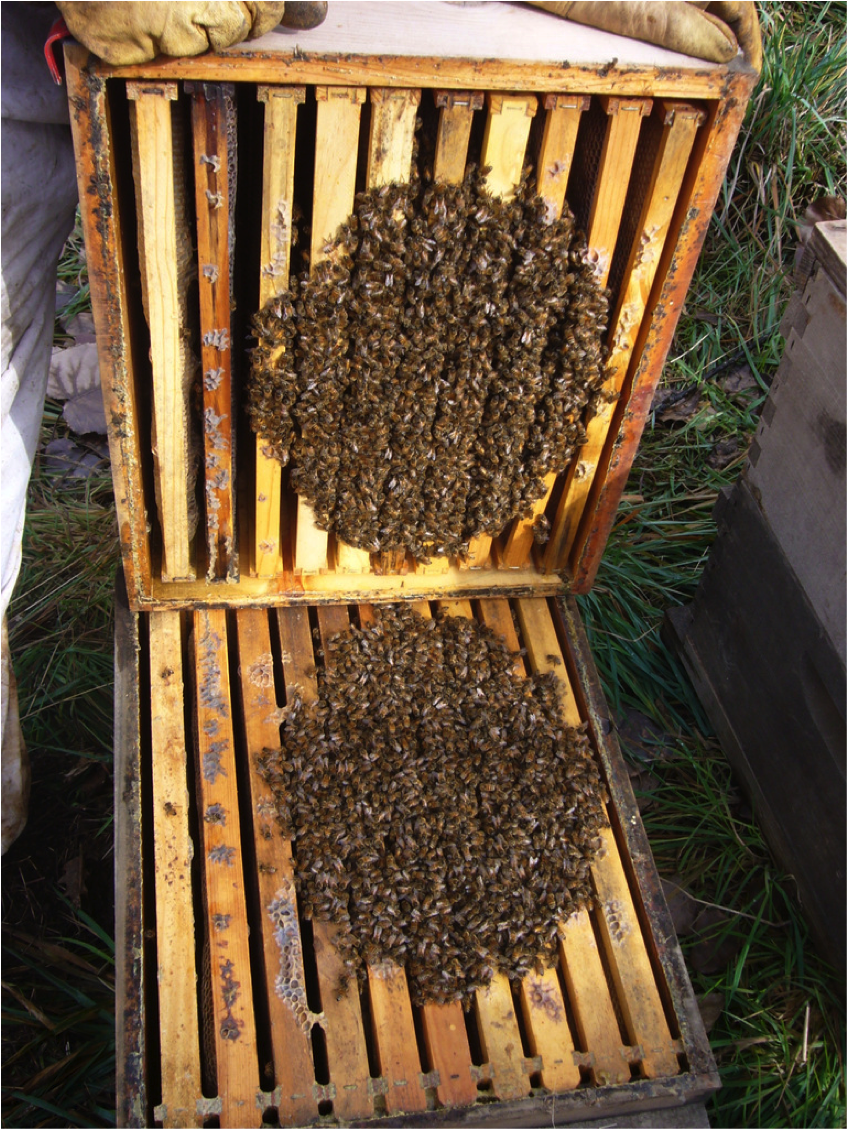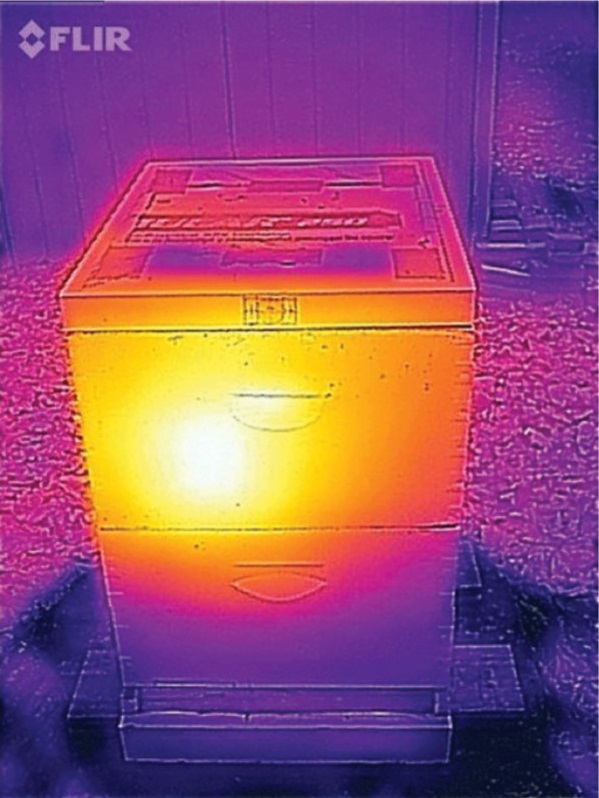 Abraham Lincoln
If given the truth, the people can be depended upon to meet any national crisis...
Abraham Lincoln
If given the truth, the people can be depended upon to meet any national crisis...
 Guildford news...
for Guildford people, brought to you by Guildford reporters - Guildford's own news service
Guildford news...
for Guildford people, brought to you by Guildford reporters - Guildford's own news service
Beekeeper’s Notes February 2018: All For One And One For All
Published on: 1 Feb, 2018
Updated on: 1 Feb, 2018
Hugh Coakley keeps bees in Worplesdon. He talks about the lack of ego-trips in a hive.
It’s been nice and cold over the last few weeks so the bees are continuing to huddle close together to keep warm, only coming out when it’s a bit warmer but generally bonded into a social cluster. They move as one around the hive to feed on their honey stores.

The beekeeper has opened up the hive to reveal a large winter cluster of bees (from the Fitzgeralds Family Farm blogspot). The colder it gets, the tighter the cluster.
An interesting thing at this time of year is knowing that the whole hive is depending on each other and very obviously acting as one. As a tight cluster keeping warm, it is evidently working as a single entity.
Of course, they work together for the colony in the rest of the year as well. It is just not quite as noticeable. Bees come and go from the hive and there is busy activity inside and out. It could be all the bees are just looking after themselves but that is not the case.
Like a human body, the colony as a whole performs all of the basic functions to support life and keep their genes going. Sometimes called a superorganism, it acts as an integrated being.
The various individuals perform different roles, all essential but which may not be to the immediate advantage of the individual bee but necessary for the colony.
Eating and digesting food, ensuring all parts of the body are fed and maintained, regulating temperature, procreating, dragging out the dead, collectively deciding on how the body will act, defending from aggressors and so on.
Like single cells in a human brain, the individual bees are ineffective alone but clever and very powerful acting together. As such, they don’t operate as individuals but as one group with a single objective.
If you asked a bee what it planned for this week, or God forbid, what was on its bucket list, it wouldn’t be agonising over its choices. Without thinking (and I wonder how much of that is going on in such a tiny brain), it may possibly raise a tiny quizzical antennae and say: “What does ‘a week’ mean?”
There is no room for individual thought in a hive and no ego-trips in a bee colony. They work together or die.
Responses to Beekeeper’s Notes February 2018: All For One And One For All
Leave a Comment Cancel reply
Please see our comments policy. All comments are moderated and may take time to appear. Full names, or at least initial and surname, must be given.
Click on cartoon for Dragon story: Public Asked for Views on SCC’s Proposal for Reduced Speed Limits






Recent Articles
- Letter: We Should All Have a Say in How Our Local Government Is Reorganised
- Dragon Review: Madam Butterfly – Grange Park Opera
- Letter: PIP Claimants Under-claim
- Flashback: Council Report Accepts Juneja Case Has Caused ‘Reputational Damage’
- Revealed Survey Shows SCC’s Preferred Two-unitary Option Has Least Public Support
- Highways Bulletin: Junction 10 Closures and Making Strides for Walk to School Week
- New River Boats for Surrey Care Trust
- Body Found in Woodland Believed To Be Missing 69-year-old
- Guildford Choral Promises a Summer Evening Spectacular
- Volunteers Are Needed To Test My Wearable Wellbeing Technology


Recent Comments
- Patrick Bray on SCC Intends to Back Public Survey Result and Shorten Summer School Holidays
- Patrick Bray on Work to Repair Cottage on Closed A281 Underway
- Jack Bayliss on Work to Repair Cottage on Closed A281 Underway
- Eric Gurney on Work to Repair Cottage on Closed A281 Underway
- Mark Coxhead on Major Disruption on the Railway During Hot Day in 1900
- Ian Stronge on Letter: Not All PIP Claimants Need It
Search in Site
Media Gallery
Dragon Interview: Local Artist Leaves Her Mark At One of England’s Most Historic Buildings
January 21, 2023 / No Comment / Read MoreDragon Interview: Lib Dem Planning Chair: ‘Current Policy Doesn’t Work for Local People’
January 19, 2023 / No Comment / Read MoreA3 Tunnel in Guildford ‘Necessary’ for New Homes, Says Guildford’s MP
January 10, 2023 / No Comment / Read More‘Madness’ for London Road Scheme to Go Ahead Against ‘Huge Opposition’, Says SCC Leader
January 6, 2023 / No Comment / Read MoreCouncillor’s Son Starts Campaign for More Consultation on North Street Plan
December 30, 2022 / No Comment / Read MoreCounty Council Climbs Down Over London Road Works – Further ‘Engagement’ Period Announced
December 14, 2022 / No Comment / Read MoreDragon Interview: GBC Reaction to the Government’s Expected Decision to Relax Housing Targets
December 7, 2022 / No Comment / Read MoreHow Can Our Town Centre Businesses Recover? Watch the Shop Front Debate
May 18, 2020 / No Comment / Read More







Janet Ashton
February 1, 2018 at 12:38 pm
Dear Hugh Coakley,
Please do get in touch. We understand local honey is a very good cure for hay fever.
Harry Eve
February 3, 2018 at 1:22 pm
So bees have no need for deceit, propaganda, consultants or politicians. “…ineffective alone but clever and very powerful acting together.” Made me think of political parties but then I read that “…they don’t act as individuals but as one group with a single objective.”